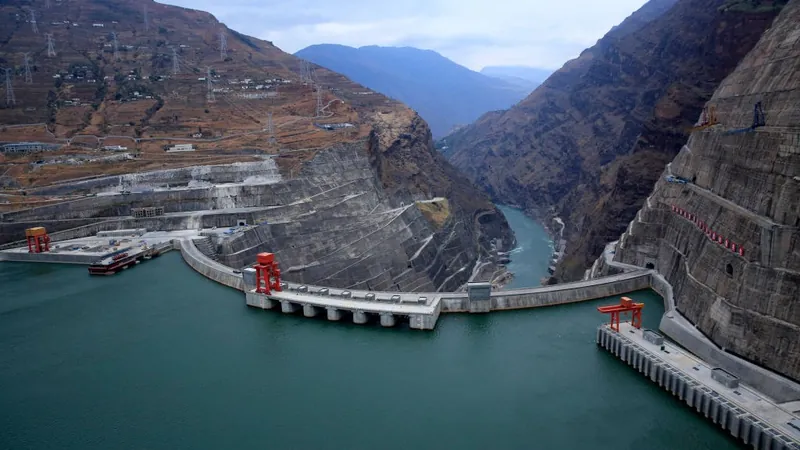
How Dams Are Secretly Shifting Earth's Poles: Shocking New Findings!
2025-07-09
Author: Olivia
The Hidden Impact of Dams on Earth's Poles!
Recent groundbreaking research reveals that the construction of thousands of dams since 1835 has caused a subtle but significant wobble in Earth's poles. Yes, you heard that right—these towering structures are reshaping our planet in ways you wouldn't expect!
Mass Redistribution: The Science Behind the Shift
Scientists have discovered that the immense volumes of water stored behind large dams actually redistribute mass across the globe. This results in shifts within Earth's crust relative to its gooey middle layer, the mantle. When mass is displaced, it alters the position of Earth's rotational axis, a phenomenon scientists refer to as "true polar wander."
The Numbers Are Astounding!
The impact of human activity isn’t just theoretical. A previous study hinted that climate change could nudge the poles by as much as 90 feet (27 meters) by the century’s end due to dramatic ice melting. Moreover, groundwater extraction alone has caused a drift of approximately 31 inches (80 centimeters) since the 90s.
In this new study, researchers examined the staggering effects of 6,862 dams worldwide between 1835 and 2011. Alarmingly, they found that the water held by these dams could fill the Grand Canyon twice and has led to a substantial 0.9-inch (23 millimeters) fall in global sea levels.
The Polar Shift Uncovered!
These dams collectively caused Earth's poles to shift a total distance of 3.7 feet (1.1 meters) during the study period. The lead author, Natasha Valencic, a graduate student at Harvard University, explained, "As we trap water behind dams, we not only remove it from oceans, causing global sea levels to drop, but we also shift mass around the planet."
Two Distinct Phases of Change
The findings reveal two distinct phases of polar wander. From 1835 to 1954, extensive dam construction across North America and Europe nudged the North Pole 8 inches (20 cm) closer to the 103rd meridian east. The following phase, from 1954 to 2011, was marked by rapid dam building in East Africa and Asia, which contributed an additional 22 inches (57 cm) shift towards the 117th meridian west.
What This Means for Sea Levels
While the shifting poles may not spell disaster for the planet, the implications for global sea levels are anything but trivial. Valencic emphasizes the importance of accounting for dam impacts in sea-level rise projections. In the 20th century, global sea levels rose between 4.7 to 6.7 inches (12 to 17 cm), with about 25% of that volume sequestered behind dams.
For those of us living near coastlines, this means that dams can significantly influence how rising waters might affect our lives.
Conclusion: An Urgent Call for Awareness
The new study underscores the pressing need for scientists to consider the role of dams in their predictions about sea level changes. The tapering of water flows into the ocean could have large ramifications—and it’s a wake-up call for us all to understand the hidden consequences of our infrastructure.









 Brasil (PT)
Brasil (PT)
 Canada (EN)
Canada (EN)
 Chile (ES)
Chile (ES)
 Česko (CS)
Česko (CS)
 대한민국 (KO)
대한민국 (KO)
 España (ES)
España (ES)
 France (FR)
France (FR)
 Hong Kong (EN)
Hong Kong (EN)
 Italia (IT)
Italia (IT)
 日本 (JA)
日本 (JA)
 Magyarország (HU)
Magyarország (HU)
 Norge (NO)
Norge (NO)
 Polska (PL)
Polska (PL)
 Schweiz (DE)
Schweiz (DE)
 Singapore (EN)
Singapore (EN)
 Sverige (SV)
Sverige (SV)
 Suomi (FI)
Suomi (FI)
 Türkiye (TR)
Türkiye (TR)
 الإمارات العربية المتحدة (AR)
الإمارات العربية المتحدة (AR)